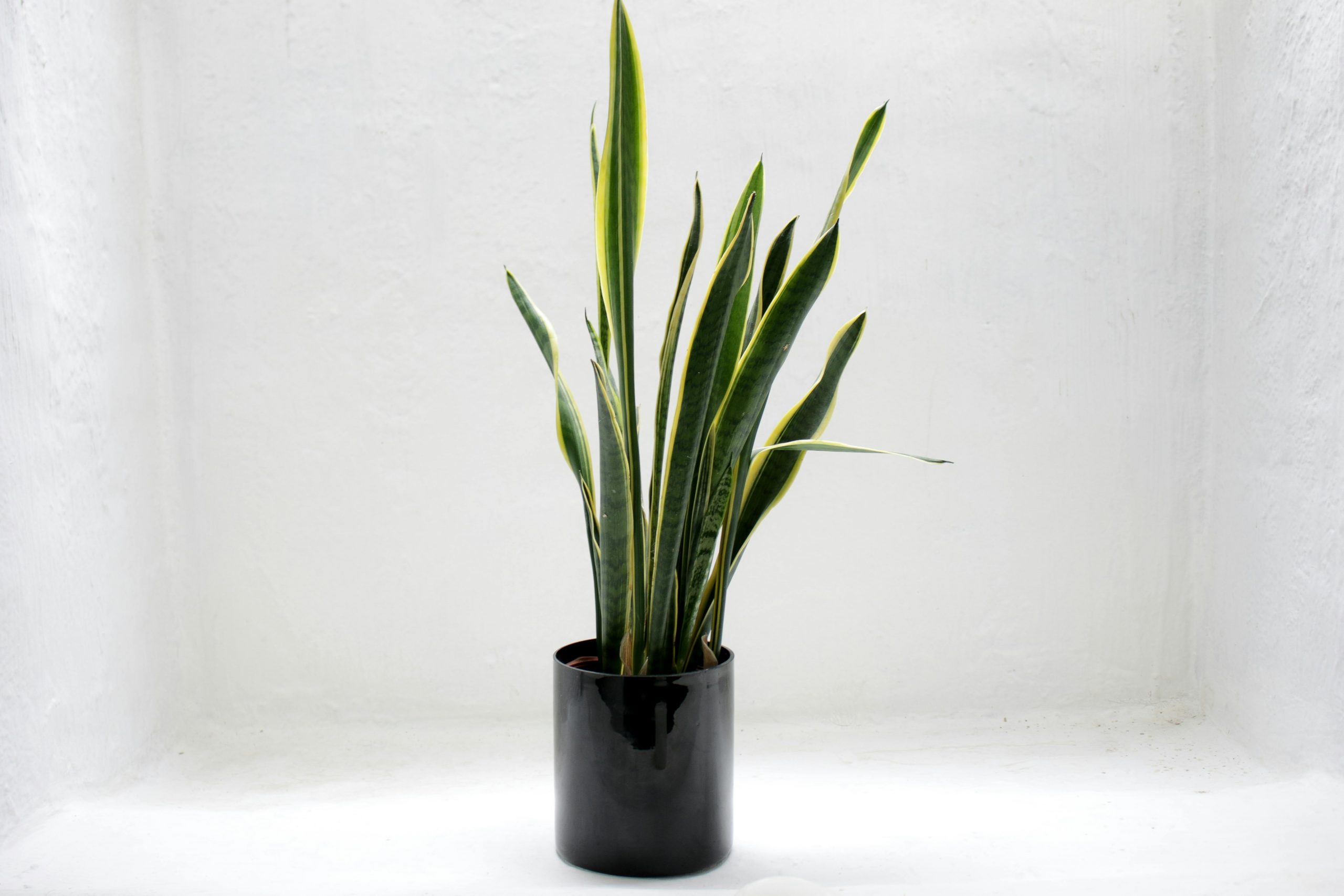Snake plants (also called Sansevieria or mother-in-law’s tongue) are popular houseplants known for their tough leaves and easy care. Many people wonder: Can snake plants live outside? The answer depends on where you live and how you care for them. This guide will help you understand if you can grow snake plants outdoors and how to keep them healthy.
What Are Snake Plants?

Snake plants are tropical plants native to West Africa. They have long, upright leaves that are green with stripes or spots. Snake plants are famous for being low maintenance and able to survive in low light, drought, and indoor conditions.
Can Snake Plants Live Outside?
Yes, snake plants can live outside — but only in certain climates. Because they are tropical plants, they prefer warm temperatures and don’t tolerate frost or freezing weather.
Snake plants do best outdoors in USDA hardiness zones 9 to 11. These zones have mild winters with temperatures rarely dropping below 20°F (-6°C). If you live in a cooler area, your snake plant won’t survive outside year-round but can spend warmer months outdoors.
Ideal Outdoor Conditions for Snake Plants
To grow snake plants outside successfully, they need:
- Warm temperatures: Between 70°F and 90°F (21°C to 32°C) is perfect. Avoid cold temperatures below 50°F (10°C).
- Partial shade to bright indirect light: Snake plants can handle some direct sun, but too much harsh sunlight can burn their leaves.
- Well-draining soil: These plants don’t like wet feet. Soil should drain quickly to prevent root rot. Sandy or cactus potting mix works well.
- Protection from strong wind and frost: Too much wind can dry them out, and frost can kill them.
If you live in a climate with cold winters, it’s best to grow snake plants in pots outdoors and bring them inside before temperatures drop.
How to Grow Snake Plants Outside

If your climate is right for outdoor snake plants, follow these tips:
- Choose the right spot:
Pick a location with filtered sunlight or light shade. Morning sun and afternoon shade is ideal.
- Use well-draining soil:
Amend garden soil with sand or perlite if it retains too much water. You can also plant snake plants in raised beds or pots with cactus soil.
- Water sparingly:
Snake plants store water in their leaves, so they don’t need much watering. Water only when the soil feels dry about 2 inches down. Overwatering is a common cause of problems.
- Protect from cold:
If a cold snap or frost is predicted, cover your snake plants or move potted plants indoors.
- Fertilize occasionally:
Feed your snake plant outdoors once or twice during the growing season with a balanced, diluted houseplant fertilizer.
Can Snake Plants Survive Winter Outside?
In most cases, no. Snake plants are not frost-tolerant. Temperatures below 50°F (10°C) slow their growth, and frost can cause leaf damage or death.
If you want to keep your snake plant outside during the summer, bring it indoors before the first frost. For those in mild climates, you may be able to leave them outside year-round with some winter protection.
Common Problems When Growing Snake Plants Outside
Growing snake plants outdoors can come with challenges:
- Root rot: Too much water or poor drainage can kill your plant.
- Sunburn: Too much direct sunlight can cause brown or yellow spots on leaves.
- Pests: Outdoors, snake plants may attract mealybugs, spider mites, or aphids. Treat pests early with insecticidal soap or neem oil.
- Cold damage: Leaves may turn brown or mushy if exposed to frost or cold drafts.
How to Propagate Snake Plants Outdoors
Propagating snake plants outdoors is a great way to grow new plants from an existing one. There are two common methods for outdoor propagation: leaf cuttings and division.
Leaf cuttings: Start by cutting a healthy leaf near the base. Let the cutting dry out for a day or two to prevent rot. Then, place the leaf cutting about an inch deep into well-draining soil in a pot or directly in your garden. Keep the soil lightly moist but not soggy. Rooting can take several weeks, so be patient. New shoots will start growing from the base of the cutting.
Division: If your outdoor snake plant has grown large and crowded, you can divide it. Carefully dig up the whole plant and gently separate the root clumps with a clean knife or by hand. Each division should have roots and leaves. Replant the divisions in well-draining soil with enough space to grow.
Propagation works best during warm months when the plant is actively growing. Keep new plants in partial shade at first to avoid sunburn. This way, you can multiply your snake plants and add more greenery to your outdoor space without buying new plants.
Benefits of Growing Snake Plants Outside
Growing snake plants outside has some advantages:
- They get more natural light, which can help them grow stronger and healthier.
- Outdoor air circulation reduces the chance of mold and fungal diseases.
- You can create beautiful garden displays or outdoor arrangements with snake plants.
Best Companion Plants for Outdoor Snake Plants
If you want to create a beautiful garden or container arrangement, pairing snake plants with the right companion plants can make your outdoor space more attractive and healthier.
Snake plants prefer well-draining soil and partial shade, so good companions should have similar growing needs. Some excellent outdoor companion plants include:
- Aloe Vera: Like snake plants, aloe prefers dry conditions and indirect light. Both plants have similar care routines and look great together.
- Succulents: Many succulents such as Echeveria or Sedum thrive in similar conditions and add texture contrast to snake plants’ tall, upright leaves.
- ZZ Plant: Another low-maintenance, drought-tolerant plant that pairs well in shaded or semi-shaded garden spots.
- Cacti: Their drought tolerance and soil preferences match snake plants, making for a desert-inspired garden.
- Ferns: For a softer look, ferns add lush greenery and prefer similar indirect light levels.
When choosing companions, avoid plants needing constant moisture or heavy feeding. Grouping plants with similar care needs makes it easier to water, fertilize, and maintain your outdoor garden.
How to Protect Outdoor Snake Plants from Pests and Diseases
Even though snake plants are tough and resistant to many problems, growing them outside exposes them to pests and diseases you should watch for.
Common pests include:
- Mealybugs: These tiny, white, cottony insects suck sap and weaken the plant.
- Spider mites: Tiny red or brown mites that create webs and cause leaf spots.
- Scale insects: Small brown or black bumps that also feed on plant juices.
To prevent pests, inspect your plants regularly, especially on the undersides of leaves. If you spot pests, wipe the leaves with a damp cloth or spray with insecticidal soap or neem oil.
Diseases:
- Root rot can happen if soil is too wet or poorly drained. Always use well-draining soil and avoid overwatering.
- Leaf spots or fungal infections may appear in very humid or wet conditions. Remove affected leaves and improve air circulation around the plant.
Keeping your outdoor snake plants healthy means regular checks and acting quickly if you notice pests or disease signs.
Seasonal Care for Outdoor Snake Plants
Outdoor snake plants need different care depending on the season to stay healthy and grow well.
Spring and Summer:
These are the growing seasons. Your snake plant will need more light and water but still be careful not to overwater. This is the best time to fertilize with a balanced houseplant fertilizer every 6-8 weeks. You can also propagate and repot your plant during this time.
Fall:
As temperatures cool, snake plants slow down growth. Reduce watering and stop fertilizing by late fall. Watch for any signs of cold damage if nighttime temperatures drop.
Winter:
If you live in a climate with frost, bring your snake plants indoors or cover them to protect from cold. Water very sparingly during winter since the plant is mostly dormant. If outdoors, avoid wet soil to prevent root rot.
Adjusting your care with the seasons helps your snake plant survive outdoors and thrive year after year.
Snake Plants as Indoor vs. Outdoor Plants
While snake plants are famous as indoor plants, growing them outdoors can give them more space and better conditions if your climate allows. Indoor snake plants thrive in low light and dry air, but outdoor snake plants enjoy brighter light and more natural watering cycles.
Tips for Transitioning Snake Plants Outdoors
If you want to move your snake plant from inside to outside for the warmer months, do it slowly:
- Start by placing the plant in a shaded outdoor spot for a few hours a day.
- Gradually increase its outdoor time over one to two weeks.
- This helps the plant adjust and avoid sunburn or shock.
FAQs About Snake Plants Living Outside
Q1: Can snake plants live in direct sunlight outdoors?
Snake plants can handle some direct sunlight but prefer partial shade. Too much sun can cause leaf burn.
Q2: How cold can snake plants tolerate outside?
Snake plants don’t tolerate temperatures below 50°F (10°C) well and are damaged by frost.
Q3: Can snake plants survive winter outside in pots?
Only in mild climates. If you live in a cold area, bring potted snake plants indoors before frost.
Q4: What soil is best for outdoor snake plants?
Well-draining soil like sandy or cactus mix is best to avoid waterlogging and root rot.
Q5: How often should I water snake plants outside?
Water only when the soil is dry 2 inches deep. Usually, every 2-3 weeks is enough, depending on rain and temperature.
Final Thoughts
So, can snake plants live outside? Yes, if you live in a warm climate with mild winters and can provide the right light, soil, and water conditions. Outdoor snake plants can grow healthy and strong with some care and protection from cold weather.
If you live where winters get cold, enjoy your snake plant as a houseplant but feel free to move it outside during the warm months. With proper care, your snake plant can thrive in either environment, making it a versatile and attractive addition to your home or garden.



